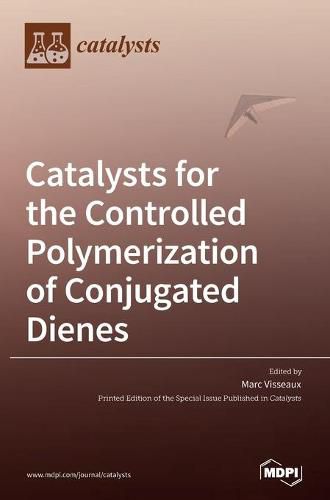Readings Newsletter
Become a Readings Member to make your shopping experience even easier.
Sign in or sign up for free!
You’re not far away from qualifying for FREE standard shipping within Australia
You’ve qualified for FREE standard shipping within Australia
The cart is loading…






This title is printed to order. This book may have been self-published. If so, we cannot guarantee the quality of the content. In the main most books will have gone through the editing process however some may not. We therefore suggest that you be aware of this before ordering this book. If in doubt check either the author or publisher’s details as we are unable to accept any returns unless they are faulty. Please contact us if you have any questions.
Since the beginning of the 1960s, the coordinative polymerization of conjugated dienes has continuously improved. Today, chemists know how to polymerize conjugated dienes stereospecifically and in a controlled fashion, both petro-sourced (nowadays also bio-sourced) and those of natural origin. The industry has greatly improved the performances of the catalytic systems-covering a wide range of elements including metals from groups 4-6 and 8-10, and rare earths-with the aim of optimizing the preparation of synthetic polymers for a large range of industrial applications. Nowadays, there is a better understanding of the polymerization mechanism involving allyl-active species, thanks in particular to the support of more efficient calculation methods. In addition, statistical copolymerization of 1,3-dienes with olefin or styrene comonomers and innovative approaches to coordinative chain transfer polymerization allow the production of copolymers with controlled topology, while a last challenge is about to be solved with the preparation of stereoregular polydienes that are also end-functionalized. This issue brings together several important aspects of this chemistry that remain at the forefront of both academic and industrial research.
$9.00 standard shipping within Australia
FREE standard shipping within Australia for orders over $100.00
Express & International shipping calculated at checkout
This title is printed to order. This book may have been self-published. If so, we cannot guarantee the quality of the content. In the main most books will have gone through the editing process however some may not. We therefore suggest that you be aware of this before ordering this book. If in doubt check either the author or publisher’s details as we are unable to accept any returns unless they are faulty. Please contact us if you have any questions.
Since the beginning of the 1960s, the coordinative polymerization of conjugated dienes has continuously improved. Today, chemists know how to polymerize conjugated dienes stereospecifically and in a controlled fashion, both petro-sourced (nowadays also bio-sourced) and those of natural origin. The industry has greatly improved the performances of the catalytic systems-covering a wide range of elements including metals from groups 4-6 and 8-10, and rare earths-with the aim of optimizing the preparation of synthetic polymers for a large range of industrial applications. Nowadays, there is a better understanding of the polymerization mechanism involving allyl-active species, thanks in particular to the support of more efficient calculation methods. In addition, statistical copolymerization of 1,3-dienes with olefin or styrene comonomers and innovative approaches to coordinative chain transfer polymerization allow the production of copolymers with controlled topology, while a last challenge is about to be solved with the preparation of stereoregular polydienes that are also end-functionalized. This issue brings together several important aspects of this chemistry that remain at the forefront of both academic and industrial research.